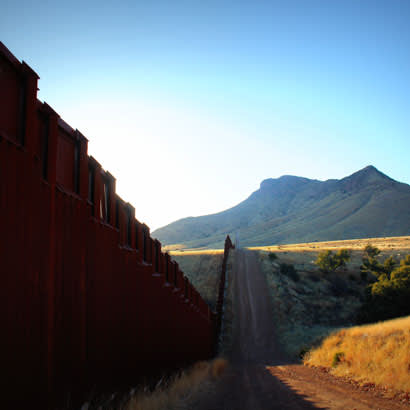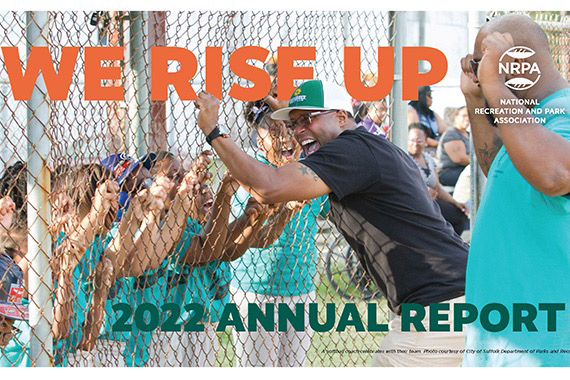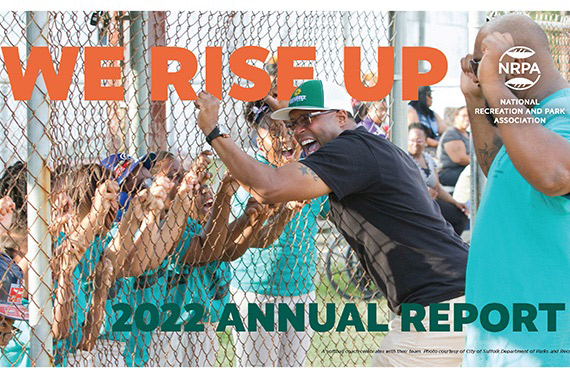
 From the Pacific Ocean to Texas, spectacular swaths of U.S.-Mexico borderlands are protected by state, national and international laws. The border wall threatens marginalized communities and endangered species, and embodies hate and divisiveness.
From the Pacific Ocean to Texas, spectacular swaths of U.S.-Mexico borderlands are protected by state, national and international laws. The border wall threatens marginalized communities and endangered species, and embodies hate and divisiveness.The border region is sacred to indigenous people, such as the Tohono O’odham, whose ancestral lands straddle it. Families routinely cross for cultural and religious practices and gatherings. It’s also home to Hohokam, Apache, Yaqui and Quechan peoples, among others. People along the border are disproportionately of color and low income, and children.
More than 90 endangered and threatened species cross the 2,000-mile border to feed, breed and thrive, including jaguars, ocelots, snowy plovers, pygmy owls and the rare Mexican gray wolf. Many species are found nowhere else.
The borderlands include river canyons, estuaries, cliffs and sand dunes. There’s Big Bend National Park in Texas, Organ Pipe Cactus National Monument and Coronado National Forest in Arizona, seven national wildlife refuges, dozens of state parks and wilderness areas. On the Mexican side of the border, El Pinacate and Gran Desierto de Altar Biosphere Reserve, a UNESCO World Heritage site, spans nearly 2,800 square miles of Sonoran Desert. Santa Elena Canyon National Park picks up where Big Bend National Park leaves off, and the Laguna Madre State Park, which hugs the Gulf Coast, is protected by both countries as one of the world’s most important bird habitats.
Research shows benefits of parks and recreation include fun, health and wellness, and alternatives to gangs and crime. Consumers spend $887 billion annually on outdoor recreation, creating 7.6 million U.S. jobs. Border businesses and cities also enjoy cross-border commerce. Parks bring people together and encourage environmental stewardship. The lack of parks and open spaces challenge people in many areas, especially children of color and those living in poverty. Border wall expansion would impair cross-cultural community building, commerce, recreation and fun, and harm wildlife and the landscape.

Border Wall History and Legal Actions
The U.S. government’s strategy to militarize the border began in the mid-1990s. El Paso, San Diego, Nogales and other places were fortified with walls, forcing undocumented migrants to cross through more remote areas. This failed to stem immigration, and served to increase environmental damage as migrants and law enforcement moved into formerly wild sites. Officials knew the death count would rise and, over the past 20 years, more than 6,000 people have died crossing the border.
In 2005, Congress gave the Secretary of Homeland Security the authority to waive laws for border walls. More than three-dozen environmental, American Indian and historical-protection laws were waived in the next few years under the REAL ID Act, and hundreds of miles of border barriers were constructed with little or no review. Thousands of miles of roads were created. New border infrastructure was often constructed in ill-advised locations with poor engineering, resulting in flooding, erosion and damage to private property and public lands. This infrastructure blocked wildlife movement on a vast scale.
Today, 650 miles of barriers block one-third of the 2,000-mile border. Roughly 300 miles is border wall, with the rest composed of vehicle barriers that allow most wildlife to come and go freely. Under current plans for the proposed wall, at a cost of as much as $70 billion, this would change and would bring with it roads, lights and even more human activity.
In 2017, U.S. Rep. Raúl Grijalva and the Center for Biological Diversity filed a lawsuit seeking a thorough analysis of border policies under the National Environmental Policy Act. Rep. Grijalva, who represents part of Arizona’s border region, bridges equal justice and environmental communities. Another suit challenges prototype walls constructed near San Diego in critical habitat for endangered species, and plans to replace 14 miles of wall nearby.
Border Wall Communities: Who lives along the border?
Undocumented immigration has been steadily declining since peaking in 2007. Most people now in the United States without papers came here legally and overstayed their visas. Even as border crossings have declined, migrant fatalities are skyrocketing. Studies show the proposed wall expansion isn’t likely to stem undocumented immigration, human smuggling or drug smuggling. It will hurt people living in the borderlands.
People who live along the border are primarily low-income people of color with limited political power. The 32 border counties are home to 6.5 million people, 1.8 million of them children. They bear the brunt of construction, environmental and health degradation, and other problems that stem from waiving laws under the REAL ID Act.
Border Wall Opposition
Growing coalitions led by the League of United Latin American Citizens (LULAC), GreenLatinos and the Center for Biological Diversity (the Center), representing hundreds of civil rights, faith, environmental, health, indigenous, LGBT and border communities, are working together to protect people, as well as the cultural and environmental well-being of the border region.
Grassroots movements encourage elected officials to stand with border communities against further militarization of the U.S. borderlands. The Center’s campaign helps states, cities and counties with these resolutions. More than 25 cities and counties — from Berkeley, California, to McAllen, Texas — have recently passed resolutions against the wall.
The wall is an affront to people, wildlife, places and values. The wall scars spectacular public lands that belong to everyone and must be preserved for our children, and it slams the door shut on equal justice and human dignity.
A snapshot of life along the border:
- 52 percent of the population is Latino, compared to the 15 percent in the United States.
- 37 percent of children live in poverty — more than twice the national average of 17 percent.
- 84 percent of those living within one mile of the border are people of color.
- Three of the 10 poorest U.S. counties are in the borderlands.
- 21 percent of border counties are economically distressed.
- 41 percent of native people in the borderlands live at or below the poverty level.
- The unemployment rate along the U.S. side of the border is two to three times higher than the U.S. average.
Marta A. Segura is the Southern California Engagement Director for the Center for Biological Diversity. Robert García is founding Director-Counsel of The City Project/Proyecto del Pueblo and Assistant Professor, Charles Drew University of Medicine and Science.

